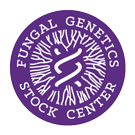Strain: Neurospora crassa
FGSC #3149
Reporting Genes: T(I->II;I;VII)AR217,ad-9;cyh-1
Species: crassa
Allele: AR217 Y154M37 KH52(r)
Alternate Strain Number: 127-1230
Depositor: DDP
Linkage Group: IR;VII;II;IR IR
Mating Type: a
Genes

Reporting Genes: T(I->II;I;VII)AR217,ad-9;cyh-1
Species: crassa
Allele: AR217 Y154M37 KH52(r)
Alternate Strain Number: 127-1230
Depositor: DDP
Linkage Group: IR;VII;II;IR IR
Mating Type: a
